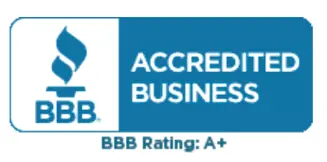-
METHENAMINE; SODIUM ACID PHOSPHATE; METHYLENE BLUE; HYOSCYAMINE (meth EN a meen; SOE dee um AS id FOS fate; METH uh leen bloo; hye oh SYE a meen) is used to stop the pain, burning, or discomfort caused by infection or irritation of the urinary tract. This medicine is not an antibiotic. It will not cure a urinary tract infection.
This medicine may be used for other purposes; ask your health care provider or pharmacist if you have questions.
-
Take this medicine by mouth with a glass of water. Follow the directions on the prescription label. Take your medicine at regular intervals. Do not take it more often than directed. Do not stop taking except on your doctor's advice.
Talk to your pediatrician regarding the use of this medicine in children. While this drug may be prescribed for children at young as 6 years of age, precautions do apply.
Overdosage: If you think you have taken too much of this medicine contact a poison control center or emergency room at once.
NOTE: This medicine is only for you. Do not share this medicine with others.
-
-antacids
-atropine
-antihistamines for allergy, cough and cold
-certain antibiotics like sulfacetamide and sulfamethoxazole
-certain medicines for bladder problems like oxybutynin, tolterodine
-certain medicines for blood pressure like hydrochlorothiazide
-certain medicines for depression, anxiety or psychotic disturbances
-certain medicines for stomach problems like dicyclomine, hyoscyamine
-certain medicines for travel sickness like scopolamine
-certain medicines for Parkinson's disease like benztropine, trihexyphenidyl
-ipratropium
-ketoconazole
-MAOIs like Carbex, Eldepryl, Marplan, Nardil, and Parnate
-narcotic medicines for pain
This list may not describe all possible interactions. Give your health care provider a list of all the medicines, herbs, non-prescription drugs, or dietary supplements you use. Also tell them if you smoke, drink alcohol, or use illegal drugs. Some items may interact with your medicine.
-
Tell your doctor or healthcare professional if your symptoms do not start to get better or if they get worse.
You may get drowsy or dizzy. Do not drive, use machinery, or do anything that needs mental alertness until you know how this medicine affects you. Do not stand or sit up quickly, especially if you are an older patient. This reduces the risk of dizzy or fainting spells.
Your mouth may get dry. Chewing sugarless gum or sucking hard candy, and drinking plenty of water may help. Contact your doctor if the problem does not go away or is severe.
You may need to be on a special diet while taking this medicine. Ask your health care professional how many glasses of water or other fluids to drink each day. Also, ask which foods to include and which to avoid to help keep your urine acidic. Your urine must be acidic for this medicine to work.
This medicine may cause dry eyes and blurred vision. If you wear contact lenses you may feel some discomfort. Lubricating drops may help. See your eye doctor if the problem does not go away or is severe.
-
If you miss a dose, take it as soon as you can. If it is almost time for your next dose, take only that dose. Do not take double or extra doses.
-
Side effects that you should report to your doctor or health care professional as soon as possible:
-allergic reactions like skin rash, itching or hives, swelling of the face, lips, or tongue
-blurred vision
-breathing problems
-dizziness
-rapid pulse
-trouble passing urine or change in the amount of urine
Side effects that usually do not require medical attention (report to your doctor or health care professional if they continue or are bothersome):
-blue or blue-green urine or stools
-dry mouth
-flushing
-nausea, vomiting
-tiredness
This list may not describe all possible side effects. Call your doctor for medical advice about side effects. You may report side effects to FDA at 1-800-FDA-1088.
-
Keep out of the reach of children.
Store at room temperature between 15 and 30 degrees C (59 and 86 degrees F). Throw away any unused medicine after the expiration date.
NOTE: This sheet is a summary. It may not cover all possible information. If you have questions about this medicine, talk to your doctor, pharmacist, or health care provider.
DISCLAIMER: This drug information content is provided for informational purposes only and is not intended to be a substitute for professional medical advice, diagnosis, or treatment. Patients should always consult their physician with any questions regarding a medical condition and to obtain medical advice and treatment. Drug information is sourced from GSDD (Gold Standard Drug Database ) provided by Elsevier.

